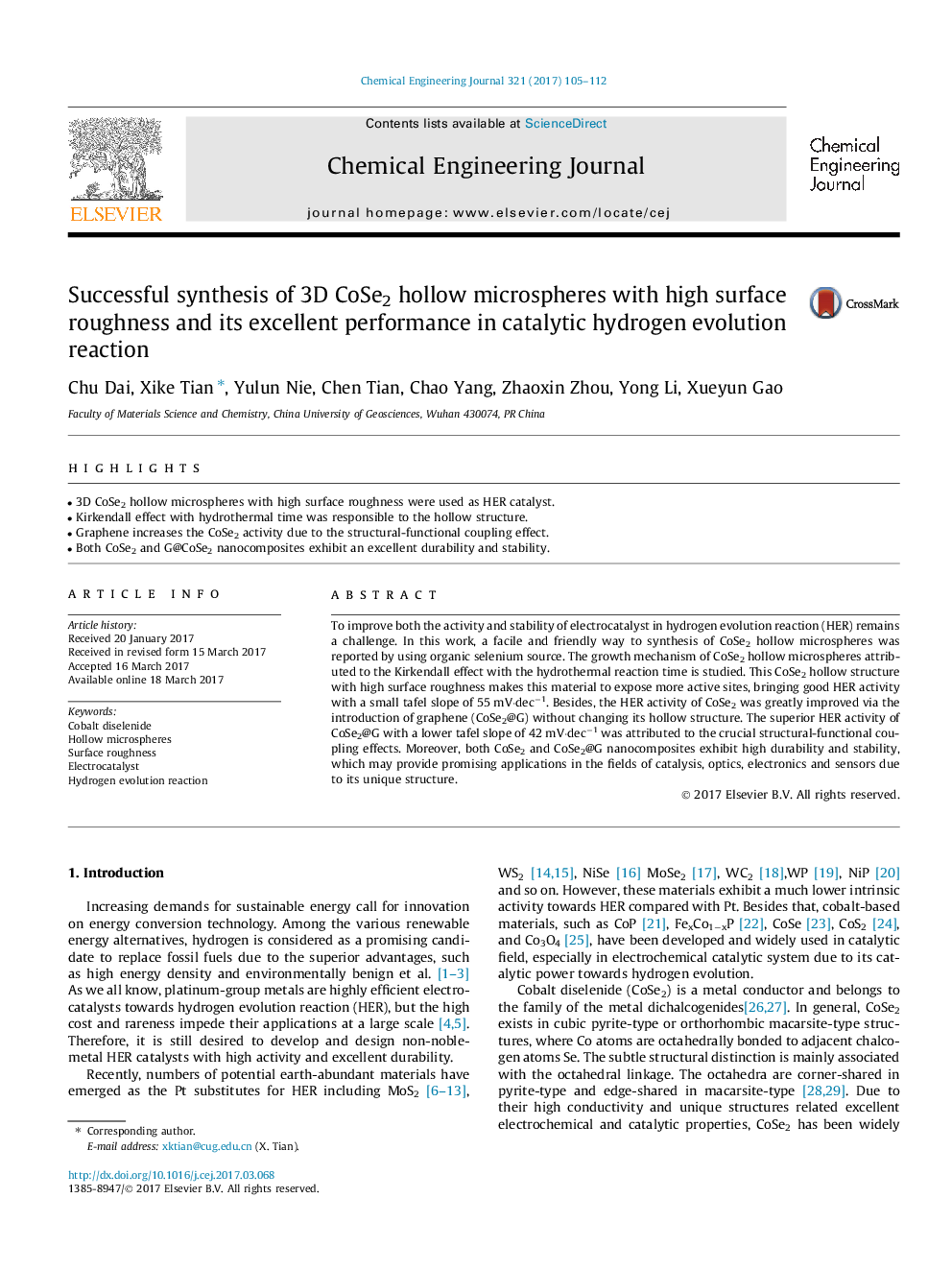| Article ID | Journal | Published Year | Pages | File Type |
|---|---|---|---|---|
| 6465867 | Chemical Engineering Journal | 2017 | 8 Pages |
â¢3D CoSe2 hollow microspheres with high surface roughness were used as HER catalyst.â¢Kirkendall effect with hydrothermal time was responsible to the hollow structure.â¢Graphene increases the CoSe2 activity due to the structural-functional coupling effect.â¢Both CoSe2 and G@CoSe2 nanocomposites exhibit an excellent durability and stability.
To improve both the activity and stability of electrocatalyst in hydrogen evolution reaction (HER) remains a challenge. In this work, a facile and friendly way to synthesis of CoSe2 hollow microspheres was reported by using organic selenium source. The growth mechanism of CoSe2 hollow microspheres attributed to the Kirkendall effect with the hydrothermal reaction time is studied. This CoSe2 hollow structure with high surface roughness makes this material to expose more active sites, bringing good HER activity with a small tafel slope of 55 mV·decâ1. Besides, the HER activity of CoSe2 was greatly improved via the introduction of graphene (CoSe2@G) without changing its hollow structure. The superior HER activity of CoSe2@G with a lower tafel slope of 42 mV·decâ1 was attributed to the crucial structural-functional coupling effects. Moreover, both CoSe2 and CoSe2@G nanocomposites exhibit high durability and stability, which may provide promising applications in the fields of catalysis, optics, electronics and sensors due to its unique structure.
